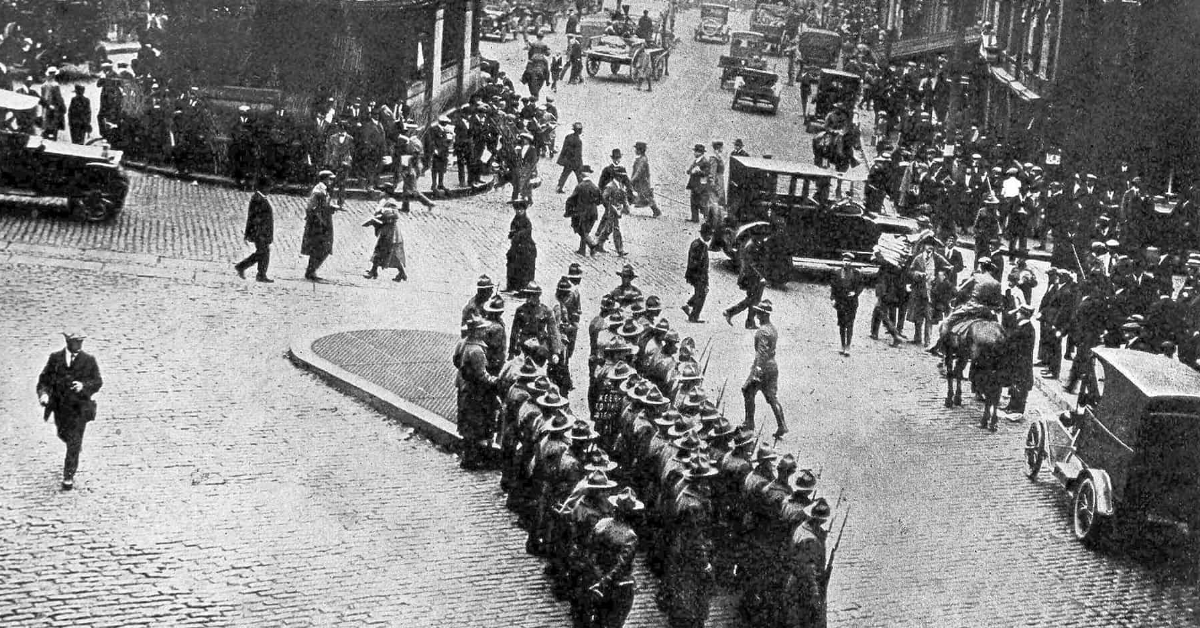Boston Police Strike of 1919
General information about the Boston Police Strike of 1919
On September 9th, 1919, the city of Boston faced a strike from roughly 2/3 of Boston Police officers. It was an ordeal that caused panic in the city for several months.

A company of Massachusetts Militia await assignment to police duty during the strike - - Boston Police Strike - Wikipedia
Why The Police was on Strike
It all started when many officers of the Boston Police were upset that they hadn't gotten a raise in nearly six years. They were forbidden to form a Union, instead of many offerers got together and formed a social club. They argued for a raise and better working conditions.
When they were denied several times and the group decided to join the American Federation of Labor as Boston Police Union, No. 16,807.
In response to the group actions, the Boston Police Commissioner Edwin Curtis dismissed eight union leaders from their police duties.
Members of the union were upset and called a strike the next day. They organized a huge rally at Scollay Square - today it's Government Center.
How the Issue was Resolved
Several Politicians worked around the clock to maintain law and order. Boston's Mayor Andrew James Peters called out the State Guard to maintain order. Massachusetts Governor Calvin Coolidge step in and ordered the guards to be in his control.
Governor Coolidge refused to reinstate striking policemen. Instead, a temporary volunteer police force was sought and within a few months, new patrolmen were hired. None of the striking policemen were allowed back on the job.
The new patrolmen did get the pay raise and benefits sought by the striking workers. But as Governor Coolidge stated, "there is no right to strike against the public safety by anybody, anywhere, any time." They were denied their jobs.
Read More
There's a lot to this story that could fit in a simple Blog post. You can read all about it in Francis Russell's book, A City in Terror: Calvin Coolidge and the 1919 Boston Police Strike: Francis Russell: 9780807050330: Amazon.com: Gateway. It's a good read to all the details that lead up to the strike and the aftermath.
Don't want to buy it? The Boston Public Library has 5 copies of the book in the Copley Square branch.
Fun Facts
Governor Calvin Coolidge was reelected to another term as Massachusetts Governor on November 4th, 1919. A year later he would be part of the Harding-Coolidge in the 1920 President ticket. (Mainly for his role in handling the Police Strike.) They won the election. On August 2, 1923, President Harding died unexpectedly from a heart attack and Calvin Coolidge became President.
James Jackson Storrow was a chairman of a blue-ribbon panel that unsuccessfully sought to avert the 1919 Boston police strike. His group encouraged the police to form a union - but not be part of any major union organization. It was this action that caused the domino effect towards the Police Strike. Storrow Drive is named after him.
